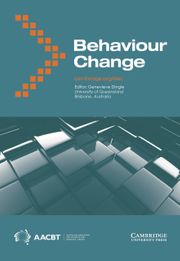Article contents
Exploring Patterns of Change Processes Over Distinct In-Treatment Phases of Cognitive and Exposure Therapies for Electronic Gaming Machine Problem Gamblers
Published online by Cambridge University Press: 06 August 2018
Abstract
Little is known about the change processes in gambling disorder-specific cognitive therapy (CT) and exposure therapy (ET). These therapies are underpinned by the cognitive approach (i.e., restructuring gambling cognitions) and the psychobiological approach (i.e., elimination of gambling urges) to treating problem gambling. Here, piecewise-linear modelling is used in a secondary analysis of randomised trial data for a CT group (n = 44) versus an ET group (n = 43) with the aim to open a discourse on how individuals respond to CT and ET relative to theory. Measures were administered between therapy sessions (average = 6.2 per individual) across 18 weeks for gambling urge (GUS) and gambling cognitions (GRCS). Results indicated the ET group had a stronger reduction in GUS (p < .01) in the first 4 weeks of treatment. Between 4–12 weeks, improvement in GUS (p < .01) and GRCS (p = .02) was more rapid in the CT group. Both groups experienced comparable improvements from 12–18 weeks. These findings have implications for further treatment development, including a combined cognitive and exposure approach that is flexibly adapted to the patient. A larger trial is needed to formally establish change processes and identify differences in problem gambler subgroups. This would provide therapists capacity to offer each patient a clear direction and an expedited pathway to their preferred outcome.
Keywords
- Type
- Standard Paper
- Information
- Copyright
- Copyright © The Author(s) 2018
References
- 3
- Cited by




